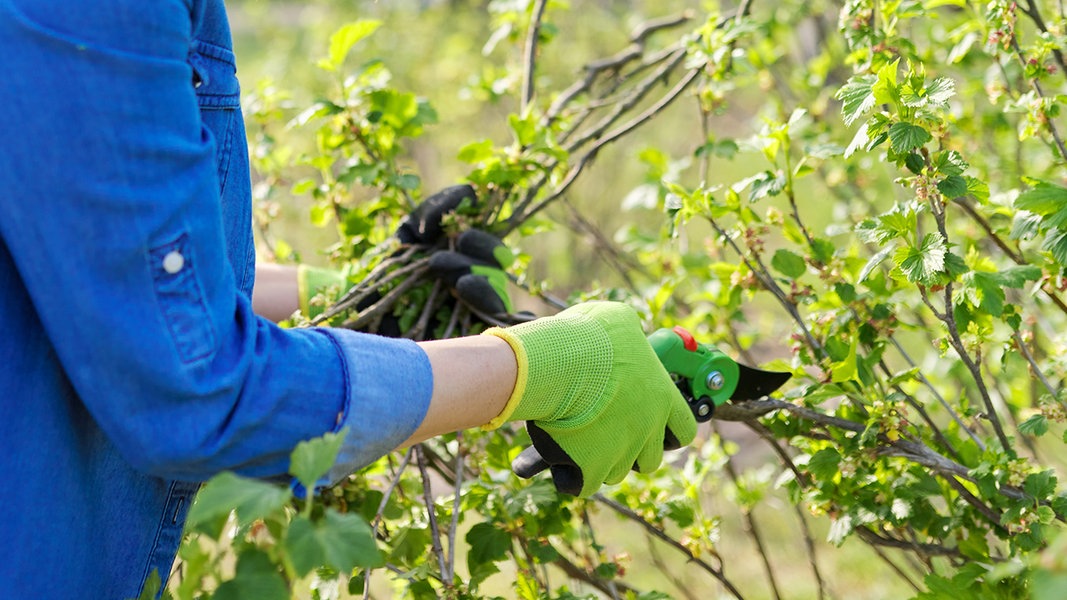Status: 07/03/2023 12:36 p.m
In order for currants to bear a lot of fruit, they should be cut. The right technique depends on the variety: bushes with red and white fruits need different pruning than black ones.
Whether red, black or white: currant bushes bear intensely tasting fruit. If they are not pruned regularly, the yield will drop and the quality of the berries will be worse. The following applies to all currants: they should get their first cut soon after planting. With the so-called plant pruning, all shoots are shortened by a third. In this way, the plant grows better and invests its energy in root formation and in the fruit wood.
Overall, the currant should only have three to five strong shoots after planting, all others cut off close to the ground. The best time for plant pruning is early spring, this also applies to shrubs planted in autumn.
Cut back the same for red and blackcurrants
For a rich harvest, currants need regular pruning.
Botanically, there is no difference between red and white currants. The white ones are special breeds that have emerged from plants with red berries. The pruning for both varieties is therefore identical. Red and white currants fruit mainly on side shoots of two- and three-year-old branches. After about four years, the yield decreases significantly, so it should be pruned regularly. Old shoots can be recognized by their darker color, thicker, and sometimes covered with moss or lichen.
Cut red and white currants
In total, an older currant bush should have about eight to ten shoots. For this reason, cut off two to three old, i.e. at least four-year-old shoots close to the ground every year. From the one-year-old shoots – recognizable by their light color and smaller diameter – two to three strong ones should be left as replacements. In order for them to develop well, they need sufficient distance from each other. Also remove all other annual shoots close to the ground. Also remove all side shoots in the lower part of the plant up to a height of about 30 to 40 centimeters. They get too little light and are usually not productive.
In addition, cut off the harvested side branches of older leading shoots to a centimeter, preferably above an outwardly protruding eye. New shoots grow from it, which carry well. Leave new side shoots, they will bear fruit the following year. Also cut off dead and crossing or competing branches.
The right cut for black currants
Black currants bear fruit on annual shoots.
Black currants bear the most fruit on the long shoots from the previous year. They are therefore cut slightly differently than red and white ones. The aim is to have as many annual shoots as possible for a rich harvest. As with the red and white currants, the bush should consist of around eight to ten long shoots. In the first three years, all shoots are shortened by about a third in early spring before they sprout over a well-developed side shoot.
From the fourth year, as with red and white currants, cut off older shoots close to the ground and leave the same number of young shoots. Also cut off weakly developed shoots close to the ground, remove competing shoots and dead wood. Prune the remaining shoots above the second or third well developed side shoot.
When is the best time to prune currants?
Older currant bushes can be pruned immediately after harvesting in summer or alternatively in late winter at the end of February. In summer it should not be a sunny, hot day, so that the plants are not exposed to unnecessary stress. In winter, an overcast day with temperatures above freezing is also recommended.
Tip: If you have planted different varieties in the garden and are not sure in spring whether it is a black or red or white currant, you can tell them apart by their smell: the flower buds of black currants have the typical cassis scent and are so easy to treat differentiate.
Further information
Currants are absolutely easy to care for. Planted in a sunny spot, the shrubs thrive without any problems. more
The tart aroma of currants goes well with both sweet and savory dishes. At the moment, berries are in season again. more
Fresh berries are delicious. In order for the harvest to be bountiful, the shrubs need the right care. more
This topic in the program:
Garden: All carrots, or what?! | 03/30/2022 | 7:05 p.m
